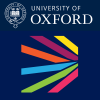Multiple Identities in a Frontier Land: Balkh and ‘The Iranians’
Noting that identities are not static, but constantly shifting, she examined the interplay between processes of self-definition and memory. Thus the land of Balkh is approached as a lieu de memoire, a site of memory that provides a useful prism through which to view the construction of historical identities.
Emphasising the importance of Balkh’s geographical-topographical context as a broad and once-walled oasis, Arezou noted the land was a distinct and distinctly imagined space, a wealthy city of the medieval Silk Road. Forming part of historical Khorasan, Balkh is primarily remembered today as the homeland of the great Persian poets of the Middle Ages and the birthplace of Sufism, for example producing the mystic and poet known today as ‘Rumi.’ In these understandings ‘Balkhiness’ is Islamic and Persian, but not ‘Iranian’ – although in the current context of Tajik-Uzbek political rivalry this is changing. In pre-Islamic times, however, Balkh was only loosely governed by the Sasanian polity, a particular region with its own identified language, Bactrian, and religion, Buddhism. Yet this is only known through Chinese sources, since medieval Arabic and Persian texts merely evoke vague ‘Indic,’ Buddha-praising (botparast) or ‘Zoroastrian’ pre-Islamic cults. Certainly, the iteration of Buddhism practiced in the region was particular and unique, but the totality of the loss of memory remains striking.
Ultimately Arezou argued that in this multi-lingual frontier land the development of ‘New’ Persian – a language almost identical to modern Farsi – was constitutive of the reimagining of an Abrahamic and Zoroastrian past, crystallised in a Perso-Islamic historiographical tradition. Represented by such processes as the formalisation of the epic tradition that would become Ferdowsi’s Shahnameh, it is this development which results in the ‘forgetting’ of Balkh’s Buddhist past.




